
On the road in the Black Forest: Rudolf Maier’s Arocs 2658 as a long timber transporter
Economics & Logistics
Two innovative vehicles operating as one: Rudolf Maier from the Black Forest drives the first new Arocs to be set up for long timber haulage with the Doll ratioplus trailer.
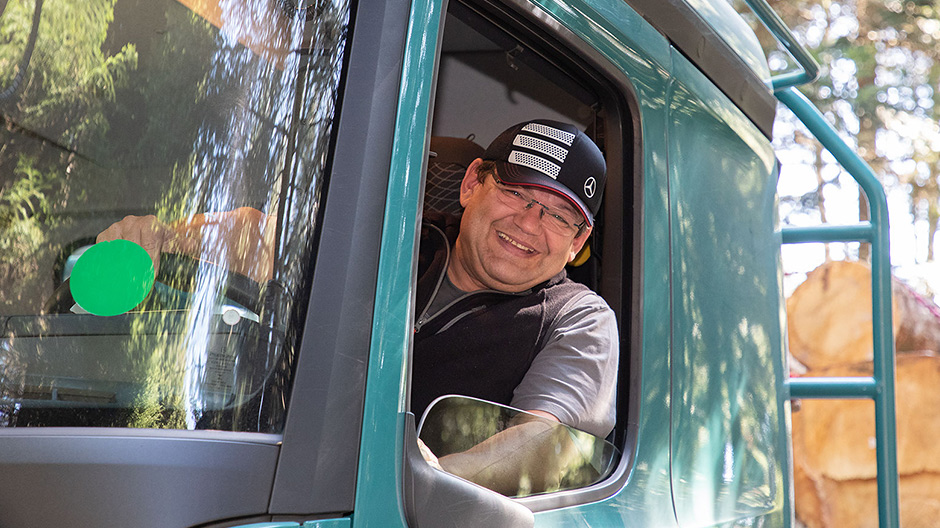
Rudolf Maier expertly manoeuvres the jaw of the crane to pick up the trailer which is resting on the rear section of his Arocs. He carefully lowers the two-axle unit onto the ground behind the truck. He then grasps one of the mighty logs lying at the side of the forest road. He lifts the giant timber and tilts it onto a projecting element of the crane boom fitted with spikes, known as a comb. Now he can use the log to manoeuvre the trailer into the correct position at the rear, after which he can start loading the rest of the logs.
Maier is the boss of a three-man timber transport business in Lierbach in the central region of the Black Forest. He does his own driving and is something of a virtuoso at the controls of his crane. He can tilt and turn logs weighing up to two tonnes surprisingly quickly and precisely to place them with inch-perfect accuracy between towing vehicle and trailer. Once loading is completed they form a stable unit that can be transported safely to the sawmill.
“You have to acquire a feeling for the timber, estimate accurately where you have to grab the log, how heavy it is, whether the crane can lift it clear or if it needs to be loaded in two moves,” says the 51-year-old. “Even the crane reaches its limitations with some logs.”
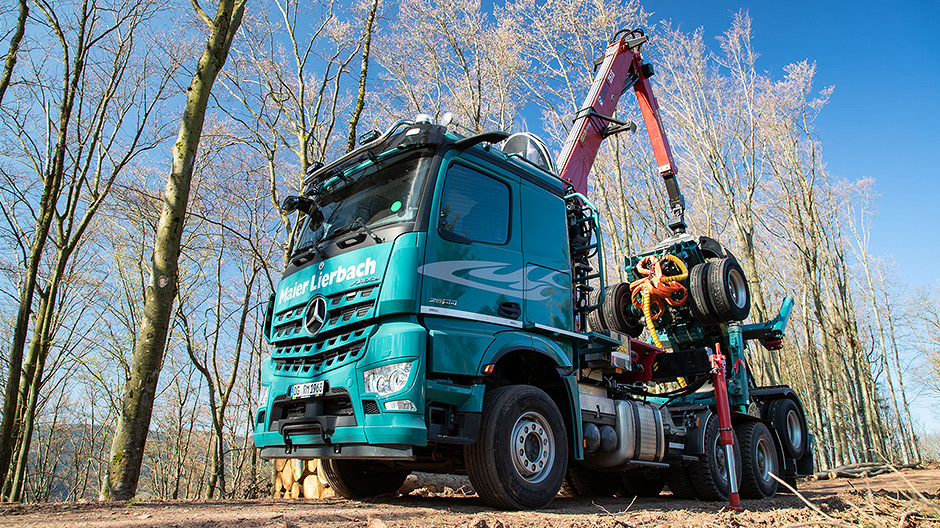
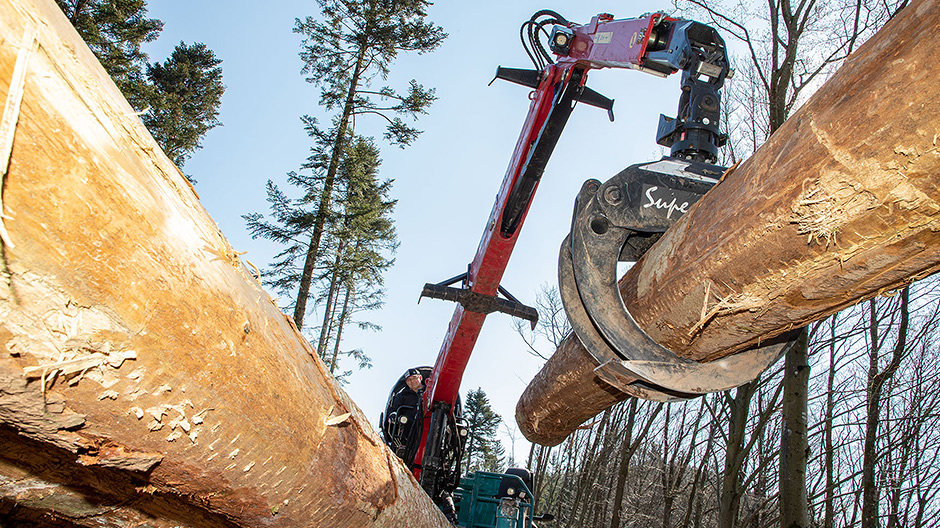
Track-in-track trailer steering system from Doll.
Even when steering the tractor/trailer combination in the narrow niches of the forest, every manoeuvre the company boss executes is spot on. The sight of the heavy-duty long timber transporter making its way down to the valley on barely metalled tracks is impressive, with the yellow warning lamps at the front and rear flashing in time with each other. Maier guides his 40-tonne burden through the arc of every hairpin bend with centimetre precision. The trailer – connected to the Arocs only by the logs and a thin supply cable – appears to be steered by an invisible hand as it follows the exact path of the towing vehicle.
Bodybuilder Doll developed the self-steering ratioplus trailer model in collaboration with the Karlsruhe Institute of Technology. Rudolf Maier worked on its development as a practical trials driver. “The automatic track-in-track system is an enormous help, especially in the forest,” says Maier. Nevertheless, everything that happens in the vicinity of the trailer is monitored by cameras – better to be safe than sorry. And if the driver encounters a corner that is too tight, there is the option of moving the axles of the ratioplus by remote control to enable the vehicle to negotiate the bend after all.
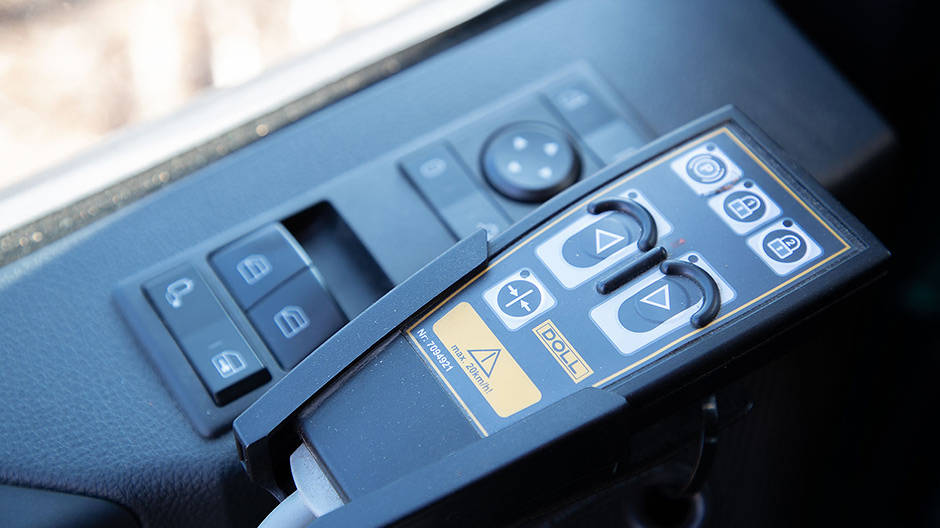
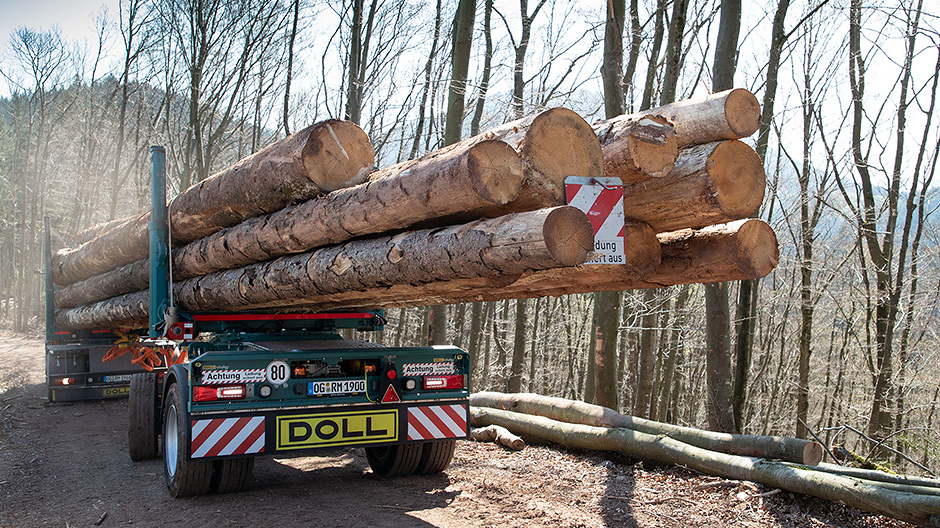
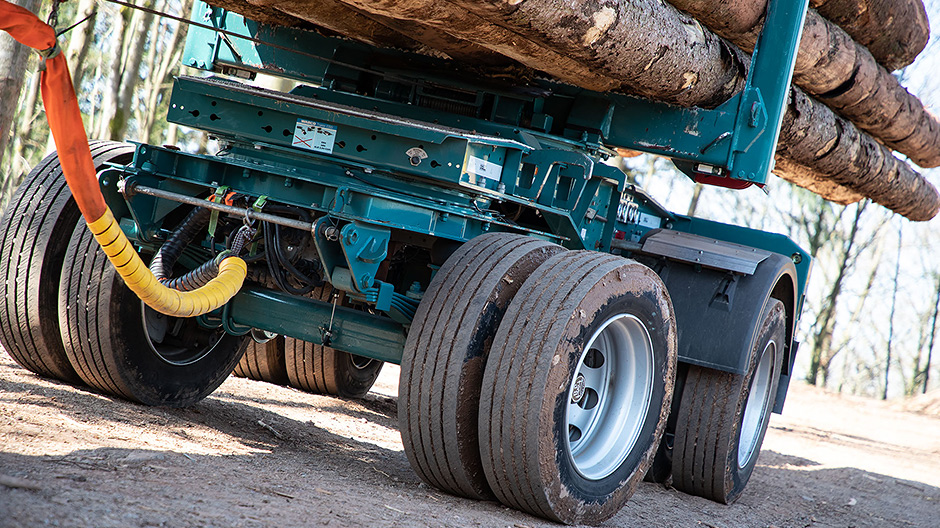
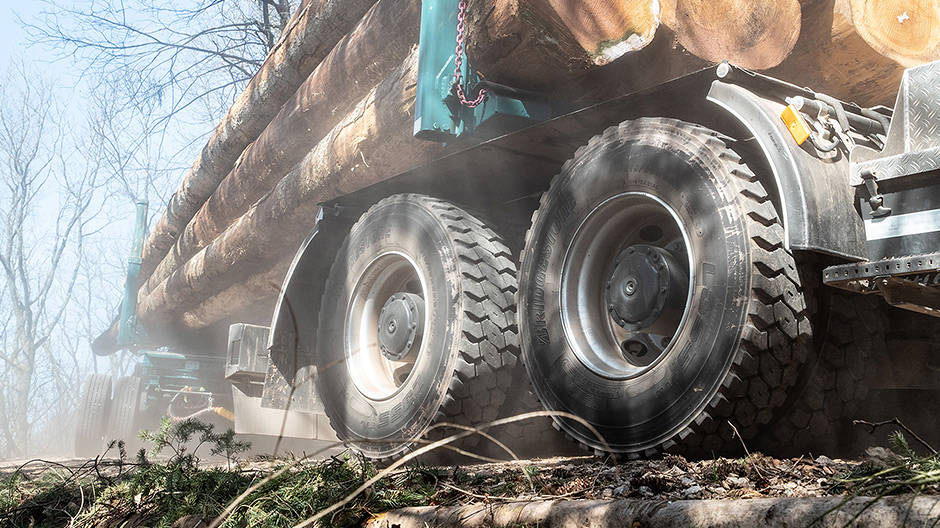
The clever Doll trailer is not the only special thing about this towing vehicle: Rudolf Maier’s new long timber transporter is the first of its kind to be built on the base of the new Arocs. This vehicle is equipped with the new multimedia cockpit, the optimised Predictive Powertrain Control cruise control and transmission management system and the new MirrorCam ausgestattet.
Maier especially likes the digital rear-view mirror: “Dirt and water can’t foul up the system, so it’s better than a glass mirror. Also, in the forest, big mirrors can often get pushed back against the truck by branches. That doesn’t happen with the small arms of the MirrorCam cameras.
Another good thing is the clear view you get through the side windows because the cameras are mounted on the roof – there are no mirrors blocking your view. That really helps when you’re manoeuvring or negotiating tight bends.”
Maier decided on an Arocs 2658 6×4 with a 3.90-metre wheelbase and air suspension. The vehicle is powered by a top-of-the-range OM 473 with a displacement of 15.6 litres, a hefty 425 kW output and up to 2800 Nm of torque, enabling the tractor unit to cope with the steepest Black Forest hills in style.
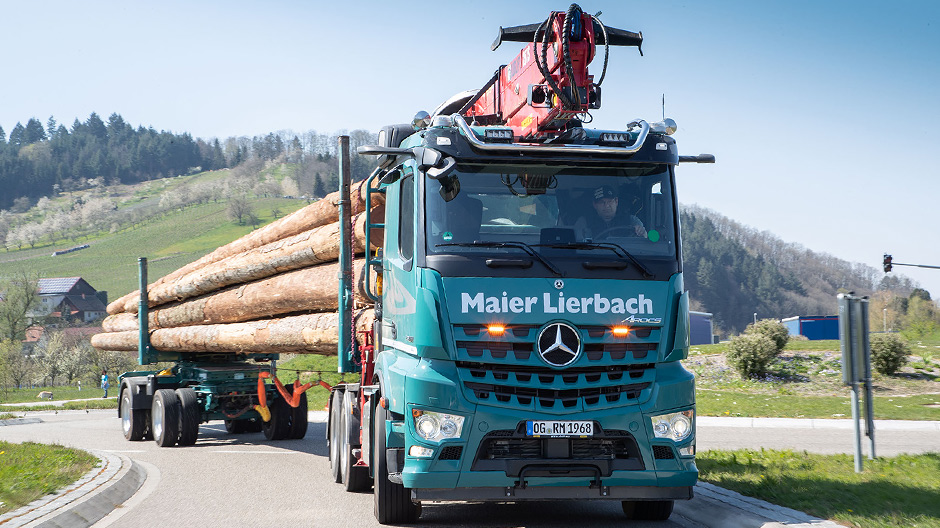
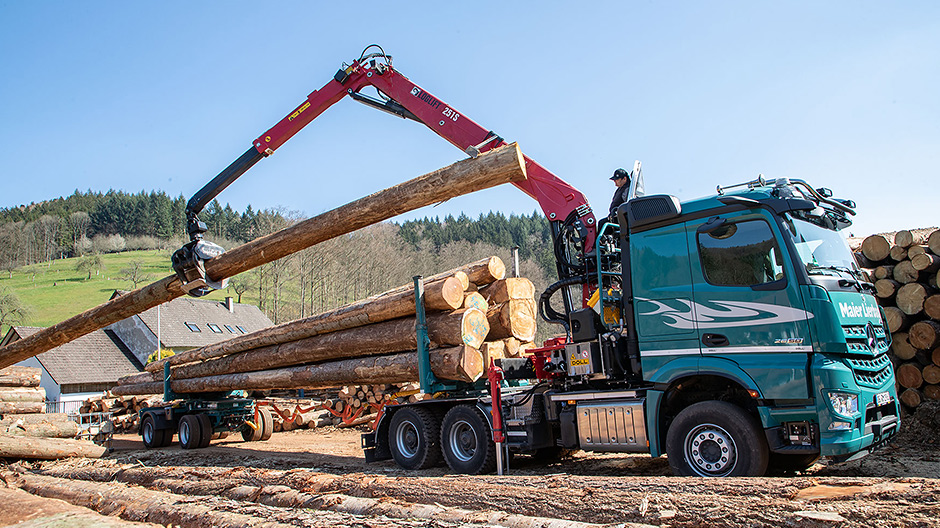
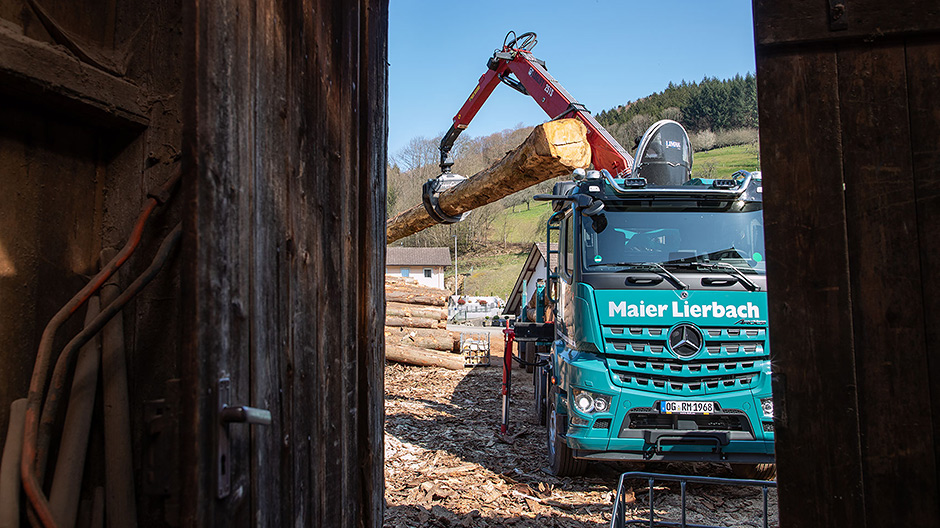
Best vehicle for forest and road.
Maier has been buying trucks from Mercedes‑Benz since 1989. This current vehicle is now his twelfth truck with the three-pointed star. As the current, particularly robust and economical inline six cylinder engine has a higher build than the previous V6, Maier had a roof notch conversion carried out by the special-purpose vehicle experts Bickel.
Now he can lower the type 251 Loglift crane with variable displacement pump down onto the cab when the vehicle is loaded and the height still does not exceed 3.95 metres.
“There are cranes that fold in behind the cab, ” Maier explains. “Then you don’t need a roof notch. But those models are heavier and need more installation space. Then I would have less payload and would have to opt for a longer wheelbase, and the price of that would be reduced manoeuvrability.”
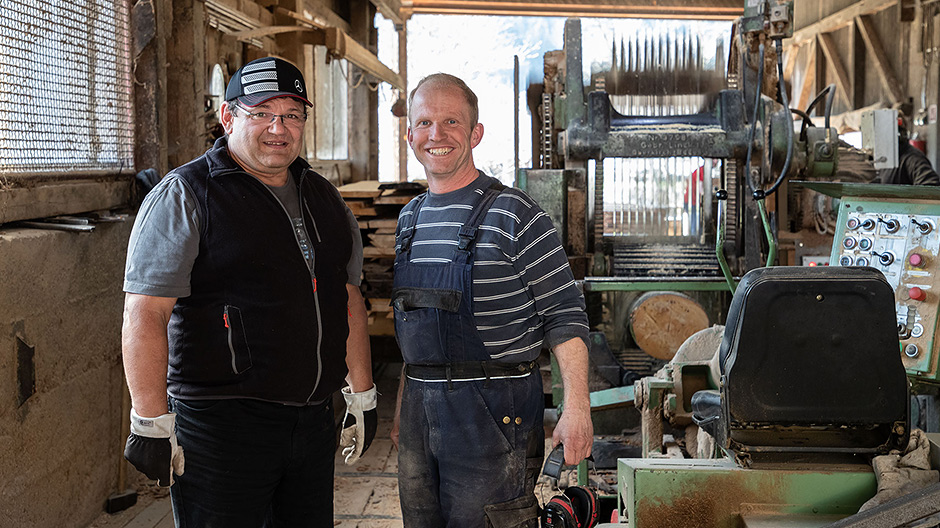
Customer and service provider satisfaction: company boss and driver Rudolf Maier (l) with Thomas Müller, owner of Sägewerk Müller in Ramsbach, a sawmill which uses long timber for manufacturing roof beams, etc.
The transport operator just wants the best vehicle for the forest and the road. “I’ve been in the business a long time and I have no desire for compromises that are made at the expense of efficiency and safety.” His customers – primarily sawmills, forestry management companies and timber merchants – welcome this stance, because they know that Maier always transports their long timber orders exactly as agreed.
In the olden days these silver fir logs were transported in huge rafts from the Rhine tributaries in the Black Forest to Amsterdam for the shipbuilding industry (giving the tree its German nickname of “Dutch pine”). Now long timber is used mainly as a construction material – for roof trusses, for example. “Rafters are generally longer than ten metres and need to be made from a single piece of wood,” explains Rudolf, whose grandfather worked in the timber transport business before him. “The logs I transport are up to 20 metres long. So at the sawmill they can choose the best pieces from the big logs for their beams.” So saying, he unloads his logging truck at Sägewerk Müller in the Rench valley in the Black Forest foothills – quickly and safely, just as you would expect from a virtuoso crane operator.
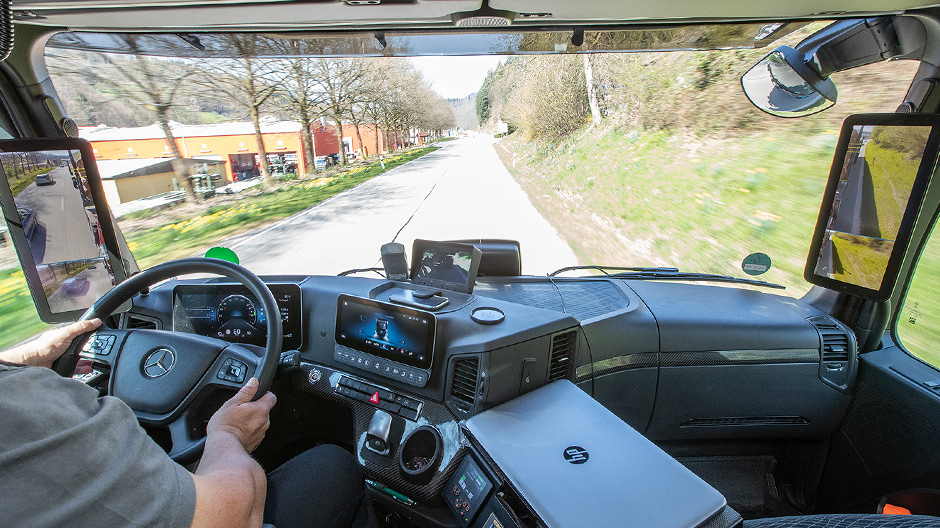
Safe, manoeuvrable and strong: with perfect all-round visibility thanks to the MirrorCam.
Photos: Henrik Morlock
Video: Martin Schneider-Lau




Comment
Please log in to post a comment.
21 comments
Dieser Bericht hat mir sehr gefallen.
Dieser Bericht hat mir sehr gefallen.
Sehr schöner Beitrag. Das FZG ist auf dem neuesten Stand der Technik und ich kenne das FZG und die Firma. Großes Lob an den Reporter, super gemacht.
Gruß Ralf
Sehr schöner Beitrag. Das FZG ist auf dem neuesten Stand der Technik und ich kenne das FZG und die Firma. Großes Lob an den Reporter, super gemacht.
Gruß Ralf
Ab Werk machbar sein... 🙄🙄🙄
Ab Werk machbar sein... 🙄🙄🙄
Es freut mich, daß immer mehr Technik, die seit Jahren im Versuch liefen, endlich auch umgesetzt werden, da ist Mercedes gut auf dem Weg. Und wer schon einmal nach Wörth von RoadStars eingeladen wurde, kann das nur bestätigen. Weiterhin: GUT HOLZ:
Es freut mich, daß immer mehr Technik, die seit Jahren im Versuch liefen, endlich auch umgesetzt werden, da ist Mercedes gut auf dem Weg. Und wer schon einmal nach Wörth von RoadStars eingeladen wurde, kann das nur bestätigen. Weiterhin: GUT HOLZ:
Toller Bericht mit sehr schönen Fotos und auch der Film ist Spitze. 😃👍
Schöner LKW😊
Toller Bericht mit sehr schönen Fotos und auch der Film ist Spitze. 😃👍
Schöner LKW😊
Ok Der Dachausschnitt wäre nicht meine Sache aber ich versteh die Begründung von Herrn Maier sehr schönes Cockpit farblich besser als beim ACTROS 👍😎
Ok Der Dachausschnitt wäre nicht meine Sache aber ich versteh die Begründung von Herrn Maier sehr schönes Cockpit farblich besser als beim ACTROS 👍😎
Grüße Jörg 👍💪👍💪👍💪👌⛟😎
Grüße Jörg 👍💪👍💪👍💪👌⛟😎